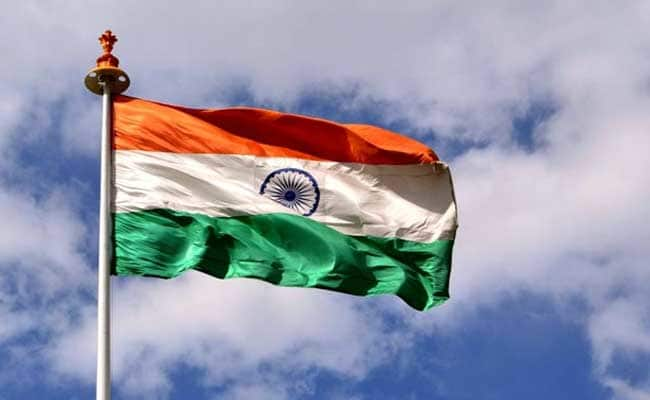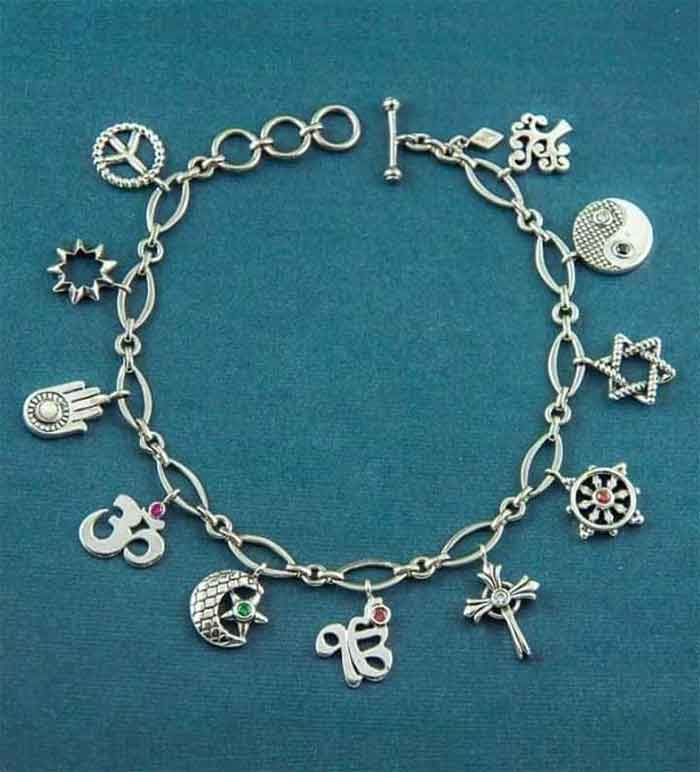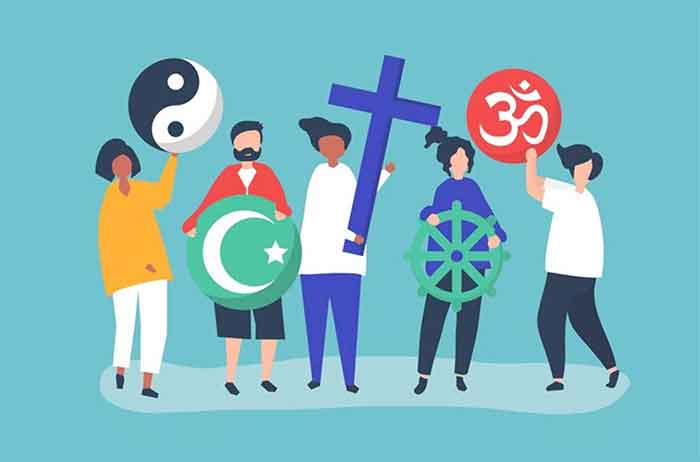
In the beginning, it would seem Mankind knew a thing or two about anthropology. Then came religion to manipulate it.
The Rashtriya Swayamsevak Sangh (RSS) has boasted of Hindutva (a concept of Hindu supremacy) as India’s national identity. This would seem convincing to a foreign tourist who visits Taj Mahal, photographs people on the Ganges, sun bathes on Goan beaches, meditates at the Auroville and reads from a road-side thrift shop pamphlet the story of an ancient country.
But does the average Indian think so too? Is there such a thing as a singular identity for all Indians? And how does one define it? When did the idea of the Indian identity come into existence?
Propaganda aside, let us think about the crux of the matter. This is verily an important question meant for posterity. A question raised in history classes, by politicians, at protests, inside court halls, then buried for decades and exhumed again for debate, for marginalisation, for division. India’s future generations will constantly tussle between modernity and proving their ‘Indianness’.
In India, which is the 7th largest country in the world, every 100 kilometre, we have a new language, a new dialect, a new tradition, a new culture, a new physical attribute, a new ancestral occupation, a new ethnicity, a new ethnoreligious group, a new climate, a new geography, a new culinary specialty, a new clothing style, a new indigenous tribe.
Anyone who has travelled on Indian roads, especially through highways that swipe in and out of small towns, will be the first to recognize the answer to the question.
INDIA – (a) the country that houses not just the largest number of Hindus in the world, but also the largest number of Sikhs, Parsis, and Jains, (b) the country of origin of Buddhism, whose influence declined because of Brahmanism and ultimately fell as a result of Islamic rule, (c) the country with the second largest Muslim population in the world and the second largest Christian influence within Asia.
What is at work here? How do we trace that mysterious singular cultural identity in all this pile of diversity?
When Dayananda Saraswati gave the call for Independence as “India for Indians” in 1876, he could have saved us all the trouble by also defining who an Indian was.
The modern Indian identity many believe was forged in the backdrop of a falling Mughal empire and an increasing monopoly of the British East India Company. The Indian independence movement resonated throughout the World. It even led to a shoot-out in an American court in 1918.
The Indian consciousness is rooted in ‘the collective’; a contrast to the Western idea of ‘the individual’. Members of the Indian sub-continent residing in man-made countries, restricted by sovereign boundaries today, are still bound by a common historical memory.
While nationalist Muslims chose India, Muslim nationalists ended up on the other side of the Partition and yet in 2021, many Indian Muslims are told ‘to go back to Pakistan’. It is as if to look at a Palestinian in his eyes and tell him, ‘Your identity doesn’t exist, you don’t exist.’
Is history not enough to determine whether the Muslim has a future in India (especially having played a significant role in its Independence) and whether that future holds true for subsequent generations?
For the uninitiated and the ignorant, India is more than just a people of majority religion. There are Rajput Muslims, there’re Hindus who worship Ravana, there’re Christians who still follow the caste system. The rise and fall of kingdoms throughout centuries led to cultural changes both at individual and community levels. Early trade with Arabia and South-East Asian lands and later contact with Europeans and Turkic opened up access to new religions. And like all human groups, the people of the subcontinent gained new identities while still preserving indigenous attributes.
For instance, let’s take the issue of the identity rights of Adivasis. The religious classifications of the indigenous people of the Indian sub-continent are yet to receive government recognition. These tribal people, with over 10 crore population, with several animistic religions and gods, are raising a clarion call for ‘aboriginal’, an option that seemed to exist during British times under the column for religion.
Despite being legally distinct religions, Sikhs, Jains, Parsis (Zoroastrians), Buddhists are still covered under the Hindu law in some parts of the country.
And then, there’s the case of communities (nomads, semi-nomads and pastoral) that were deemed too outrageous and uncivilised by the British and categorised as Criminal Tribes. While it was denotified in the 50s, the stigma continues to thrive. These marginalised sections, these so-called last links between civilization and tribal society, still face the burden of stereotype under the Habitual offender Act, a successor to the colonial era Criminal Tribes Act. Despite calls for amendment, including from the UN, there has been no progress to repel the legislation and rehabilitate them under depressed classes (Scheduled castes/tribes). And worst of all, their population is ignored during Census exercise. They are not even considered as Indians.
Today no one argues about this any longer, it is always about Hindu-Muslim. To this end, I feel like reminding Indians that there is more to India than just two religions or religion in general.
In a country so vast and so diverse, how can religion be a unifying link? How is it that a religion serves to be a singular identity for a heterogenous mix of people who distinguish themselves from different parts of the society?
If religion is indeed the core aspect of India’s unification, why were the states split on linguistic basis?
The Pakistani partition, a clear-cut result of religion, ended in failure with the creation of Bangladesh in 1971. A Bengali Muslim is distinct from Urdu speakers of the same religion. Likewise, a Marathi Hindu possesses certain cultural traits (aside from the obvious linguistic differences) compared to their Gujarati counterpart. What we are saying here is that tradition and culture differs from religion, although they affect each other to a certain extent. There are several crore Hindus in India, yet they are all bound less by religion and more through recognisable traits such as common mother tongue, regional festivals, state culture, folk songs, cuisine and geographical history. Surprisingly, the early Indian leaders feared that slicing India into multiple smaller states would lead to ‘Balkanisation.’
Like a seasonal depression that comes with cold winters and ends with the onset of summer, modern Indians traverse the new world caught in a fluctuating loop of irreligion and sudden religiousness. In Tamil Nadu where I grew up, in a house where my friend and I ate from the same plate, we decided to visit the place having met after several years. All the while, he looked at me with contempt. His eyes were no longer familiar. He spoke less and when he did, he reproached me for events that happened in a different part of the hemisphere. Finally, he said: “We are done here. Let’s leave and not see each other again.”
All that childhood nostalgia, those moments spent in cricket, Golu festivals, bicycle rides, lovelorn fights vanished because he mixed religion with individual identity. If childhood acquaintances can turn ideological foes, imagine its effect on random strangers.
India is changing like the slow death of Urdu from national consciousness. The erasure of a language native to its country speaks of a sad state of affairs. This casual catastrophe in the making results from people failing to understand the core aspect that India is non-monocultural. India is a country, but it is also a union of states. It is the sum total of all descendants from populations who inhabited the geographical region at the time of geological change, climatic change, conquest, colonisation to present-day sovereign establishment. Unfortunately, the characteristics of the sub-continent were never successfully passed on to the country that is India today.
From Indo-Iranians, Luso-Asians, Dravidian to Tibeto-Burmese and so much more, the diversity of ethnic groups profess India’s position in the world as more than just a mere country with a majority religion. The true identity of India lies in understanding and absorbing all these variations. But the inability of a few to tolerate such an ‘intrusive’ thought of India is evident in everyday news headlines. India has always had problems with intolerance. Even Kabir, the revered poet received threats for his rational views on religion.
A new kind of thinking is necessary for a new India: one that doesn’t rely on religion. Surely, it is impossible for religious identity to become obsolete in India. Then what are we saying here? It is the manner in which we approach people that matters from now on.
Change is coming everywhere. Secret revolutions are conjured in end-to-end encrypted social media apps with the power to topple age-old regimes. But there still exists perpetual power structures trying to maintain status quo over modern ideas. Nazi Germany had the SS, Independent India has the RSS. Nearly 90 years ago, a young anarchist called Bhagat Singh laid out that mixing religion with politics would have an adverse effect. On the contrary, modern India has moved on from such notions and made religion the most fundamental ingredient of Politik.
With such wide absorption of cultural assimilations, it is futile to ponder upon a single national identity that represents India. It is of utmost and timely importance that we find a way to preserve this cultural mishmash and not succumb to ‘superior-inferior’ thinking complexes.
When I was young, none of this mattered, only because I did not grow up in a displaced environment. Now, I understand what armed struggle means. How far can people be enslaved and not let their ideas run free? Is this what results in rebellion? Even the Indian struggle for independence had its non-violent limitations. Have mere words ever worked? Has any national liberationist achieved peace just through dialogue with colonialists? I guess the realisation that resistance is a human right is a sign of me growing up. For every Gandhi, there’s a Bose, I say.
The partition was the largest human displacement in modern history and its ghost still haunts us. India was literally carved out of blood. The earliest idea of the revolt against the British Empire was for an Independent India devoid of a superior religion, caste or culture. Though in the longer run, this idea mutated into a virus strain causing communal infections.
Can one religion become a singular national identity? It is for posterity to decide but let the record show that Indians in 2021 still believe in the secular character of the Constitution.
The history of the world has always been about subalterns fighting the majoritarian. The anti-Hindi movement in Tamil Nadu was against the establishment of a Hindi hegemony. In Algeria, the Berbers agitated against Arabization in the 1980s. Post-independent India witnessed several such regional civilizational protests. Many years later, we’re still stuck in a revolving door of injustice and reconciliation. Casteism continues to rage not just in the hinterland but also in metropolitan cities. Indians vie for space race limelight. We will land on the Moon one day and yet continue to use ‘select’ human beings as manual scavengers. Every casual conversation slips into pitting religion against religion, language against language, caste against caste.
Seems to me that it is better to be ignorant; if not, at least silent. But is that a life even worth living?
Mohammed Hidhayat is a Journalist based in Chennai, India.
















































